Memory Pillars of Chhattisgarh: Photo story
Honouring the dead
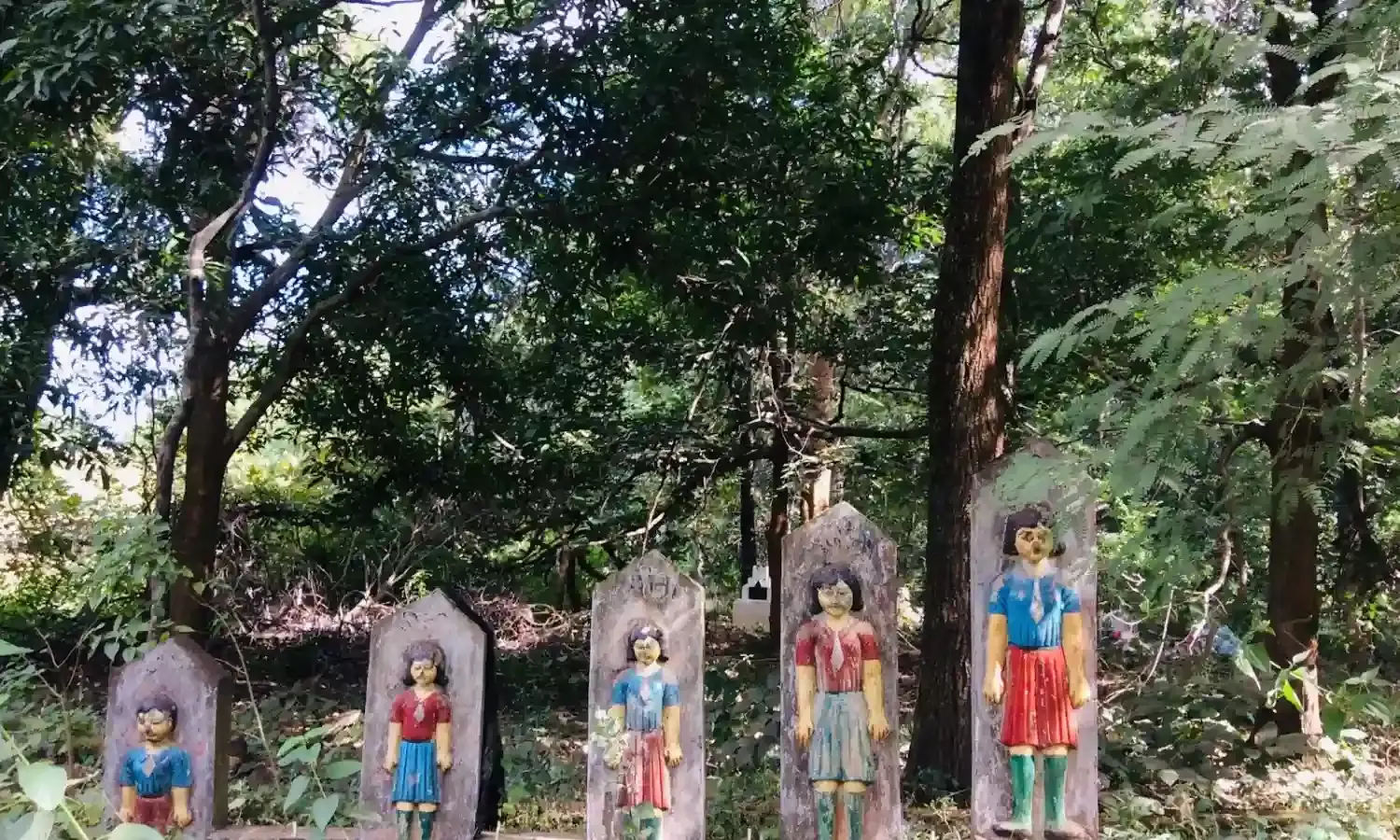
Kirandul, 39 km from Dantewada district in southern Chhattisgarh, is full of rich iron ore deposit mined by the National Mineral Development Corporation. In this picturesque place famous for the Bailadila mountain range, an afternoon journey revealed an interesting sight. Just along the roadside, five vertical pillars of varying height and bearing the embossed figures of four girls and a boy stand together under the shade of trees.
Known as memory pillars, these structures are erected along main roads where travellers can easily notice them. Bearing remarkable beauty, variety and craftsmanship, these pillars erected in honour of the dead dot the landscape of Dantewada as well as the adjoining Bastar district.
The five memory pillars in Kirandul have a tragic history as narrated by forest guard from the Dantewada forest division CR Sori. The story goes that about 18 years back on a summer day all the five children somehow drowned one by one in a water body while playing. Later, in their memory, the pillars were constructed.
A custom prevalent among the Muria, Maria and Gond tribal communities of the entire Bastar region, memory pillars serve as memorials even though the material used in construction may vary from place to place as well as the design. Though wood and stone are commonly used to make memory pillars, in a few places structures made of cement were also noticed.
In fact on another day, while travelling to Paraspal village of Dantewada, several memory pillars made of cement clustered together on both sides of the road came into view. According to Paraspal resident Anil Karma, families who are well-off make structures of cement while some also use marble as they can afford the cost.
However, the wave of modernisation among the Adivasis as Karma calls it, is also responsible for sweeping changes in the way memory pillars are made to look these days. In the old days, bare stone slabs were erected as is evident from the numerous ancient pillars in Dantewada’s Gamawada, which is an Archaeological Survey of India protected site, dating back almost 2500 years.
Seen in a contrasting light, many recently established memory pillars bear colourful paintings of various objects and even birds and animals. A unique lone pillar in Paraspal has steel tumblers meant for drinking water attached to the top signifying the concept of life after death. There is also the image of the elaborate headgear worn by Maria tribal men while performing the bison horn dance, signifying that either the deceased liked the dance form or may have been a dancer himself.
As memory pillars are meant to be seen and admired by passersby, they are usually built in honour of socially important persons often near important crossroads. Pillars of a particular family or of the same clan are found together on a piece of land belonging to the gram panchayat. Before erecting memory pillars, it is usual to bury coins and utensils underneath as part of an elaborate annual ritual. A feast is also organised and guests are invited.
Gamawada resident Rajkumar Bhaskar informed that Adivasis mostly wait for a year before erecting these pillars. Soon after a death occurs in a family, stones are erected and later pillars. These days even OBCs have started erecting memory pillars but they do it within a few days and prefer not to wait, he said.
Apart from Dantewada, Bastanar, an old village in Bastar district, also has many interesting memory pillars made of wood and stone. Bhaskar added as red-coloured stones are found in plenty in Bastar, these are often cut and shaped into pillars to honour the dead. While some stone pillars stand bare, a few of them mention the name of the deceased, the village and the dates of birth and death.
The tradition of erecting memory pillars has continued despite developmental activities like road construction and urbanisation. Social worker Pramod Potai, who works for Saathi Samaj Sevi Sanstha in Kondagaon district of Bastar sub-division, a non-profit working among tribals, fears that in the years to come it may be hard to find suitable spaces to erect memory pillars. “With rapid modernisation, many tribal areas are witnessing encroachment and the widening of highways. Many memory pillars seen along main roads today may be gone tomorrow for the sake of development,” he added. Potai is also part of a cultural committee in Bastar the aim of which is to promote and conserve tribal culture.
Lands containing memory pillars belong to the gram panchayat, but there may come a day when finding suitable space for erecting new pillars are hard to find and designated sites fail to allow the construction of more structures due to the lack of space, Karma said. He added that in this regard once an informal discussion was held with community members in his village and hoped that a decision would be taken in future.
For now, travellers can appreciate the beauty of this ancient custom of erecting memory pillars where the dead are not allowed to pass into oblivion.
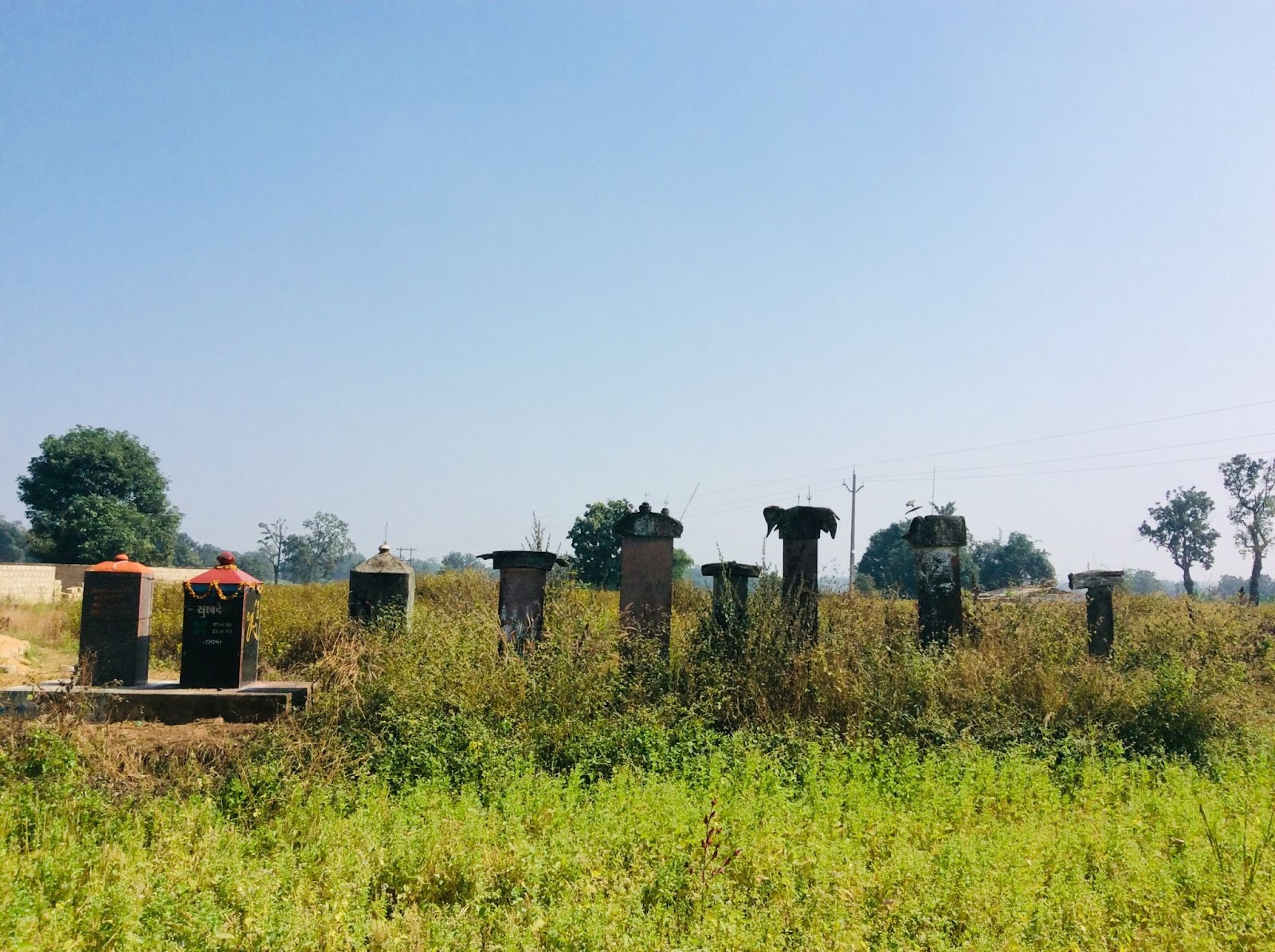
Sometimes a place can have several memory pillars erected in honour of socially important individuals after their demise. Earlier, memory pillars were made of wood. Today, most are made from stones or cement as they can withstand the test of time and the ravages of weather.
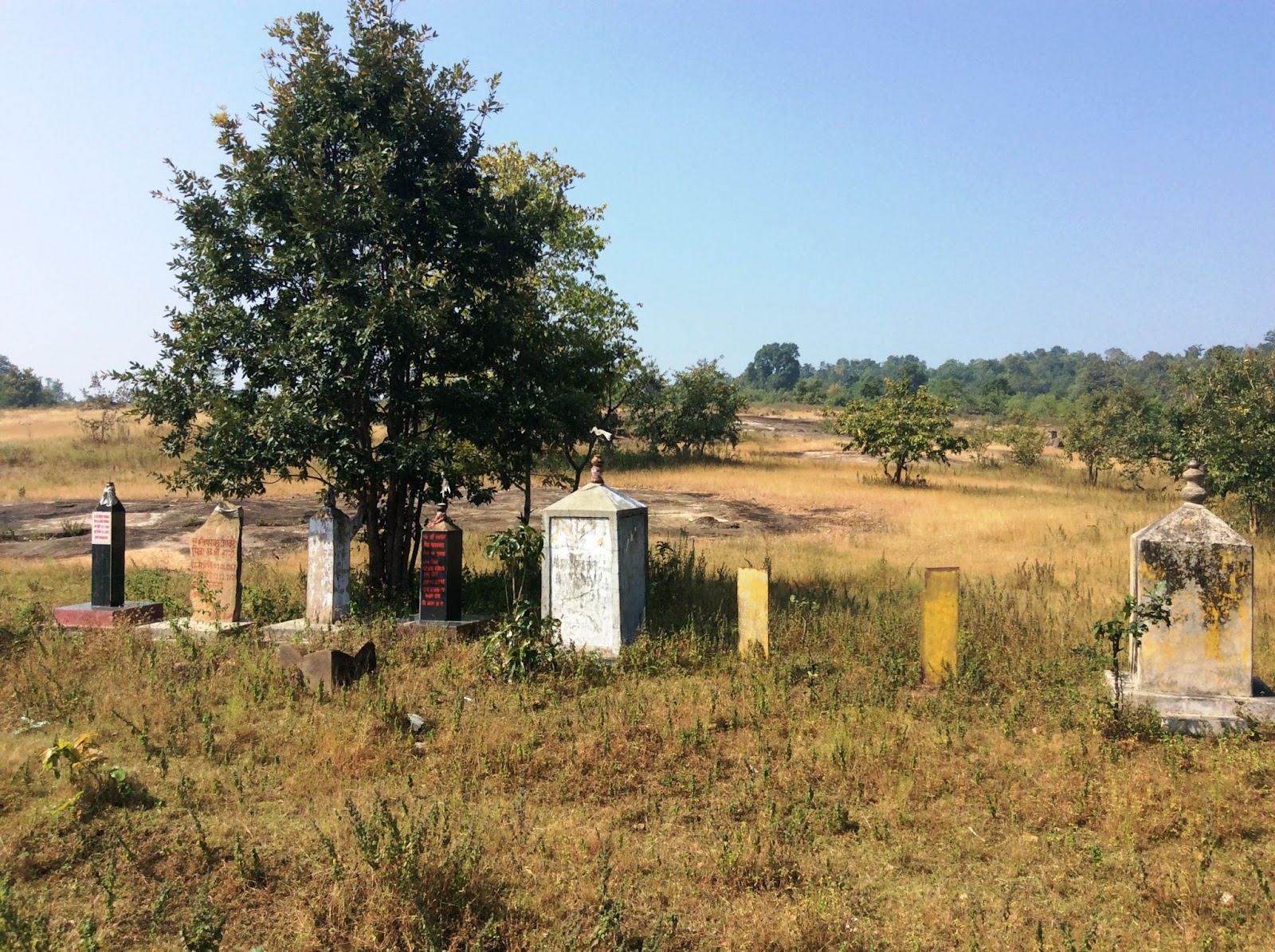
Pillars erected in a single place can vary in shapes and sizes depending upon the money spent by families and the expertise of artisans especially hired to make them.
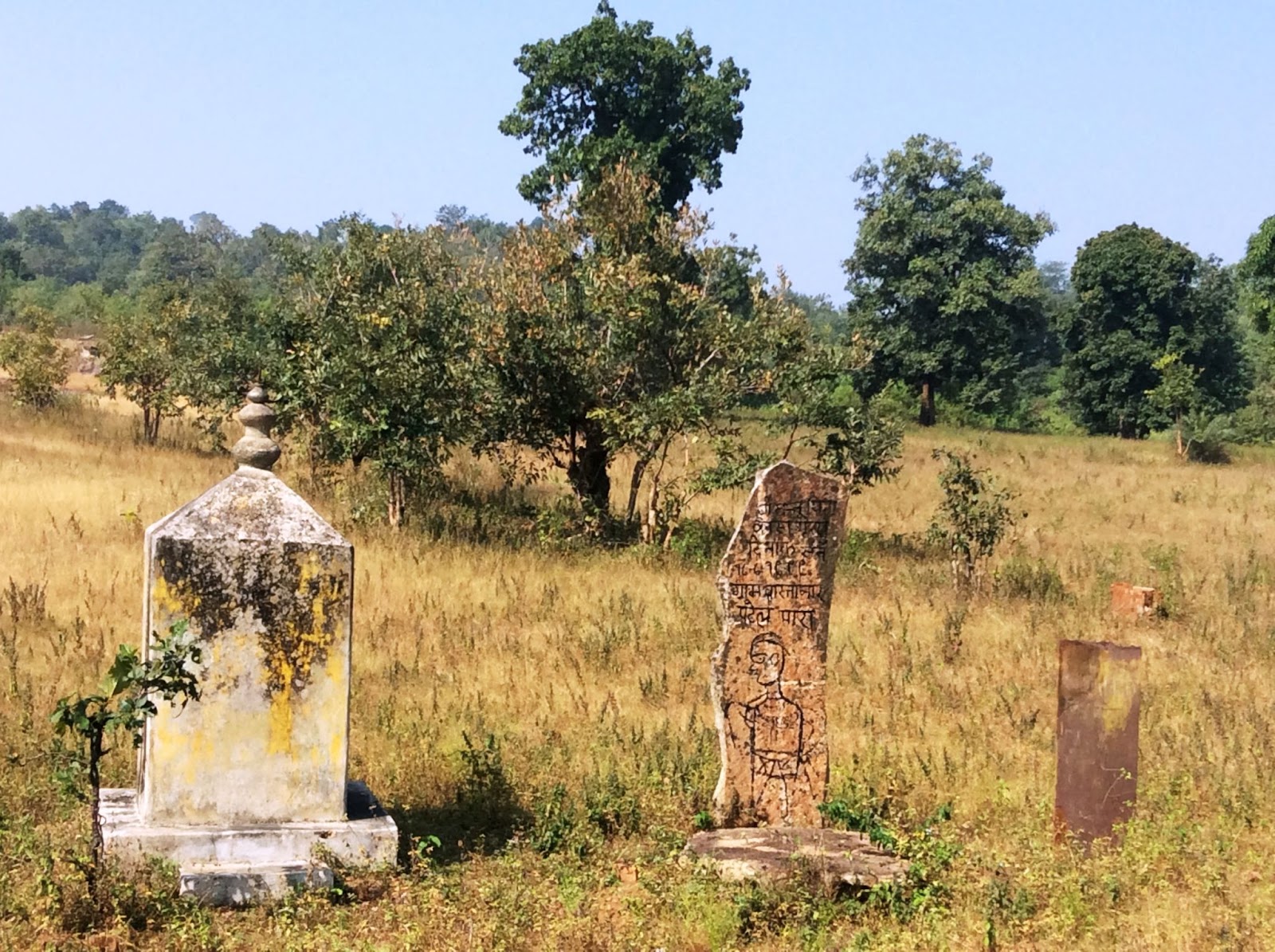
The pillar erected in the middle looks interesting. It looks more like a megalithic menhir belonging to ancient times. Indeed, memory pillars are a continuing megalithic tradition of India.
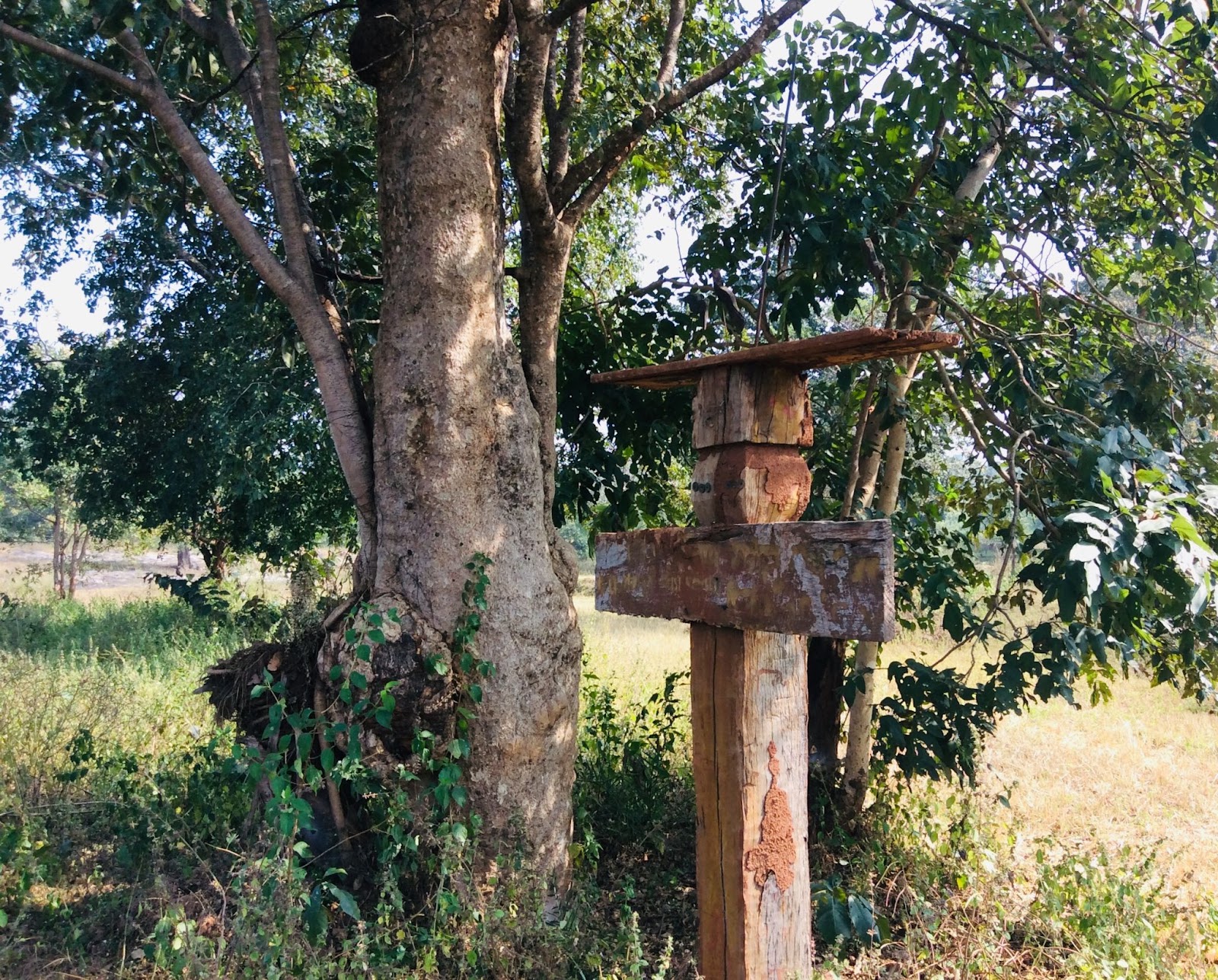
A wooden memory pillar seen under the shade of a tree. Though wooden ones look beautiful, they decay fast.
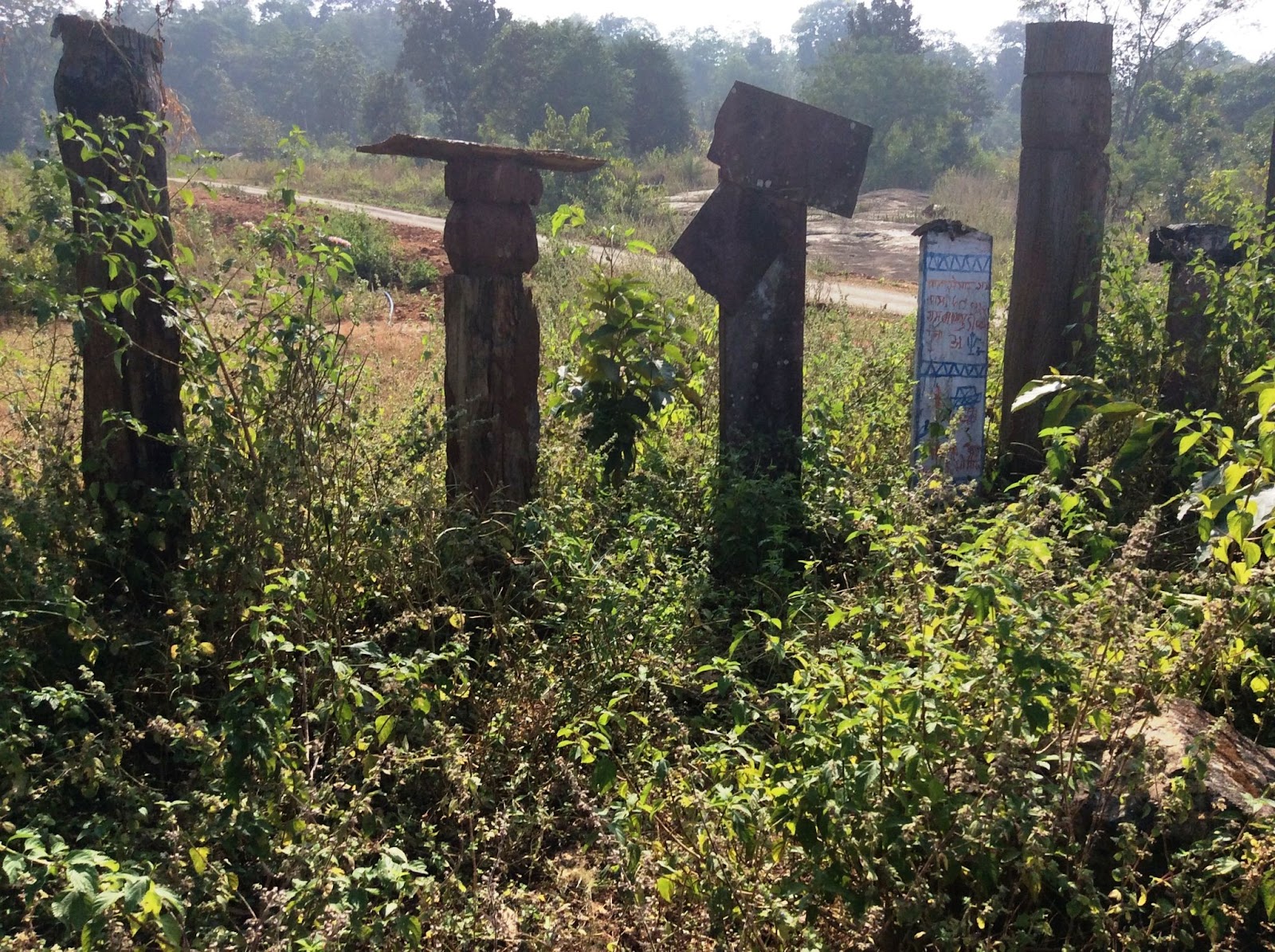
Pillars made of stone and wood stand together. In many places, dense shrubs cover them from sight and cannot be easily spotted from a car. The smaller one painted in white with writing on it is possibly a recent addition. Many pillars erected in recent years have interesting painted motifs of various objects, birds and animals.
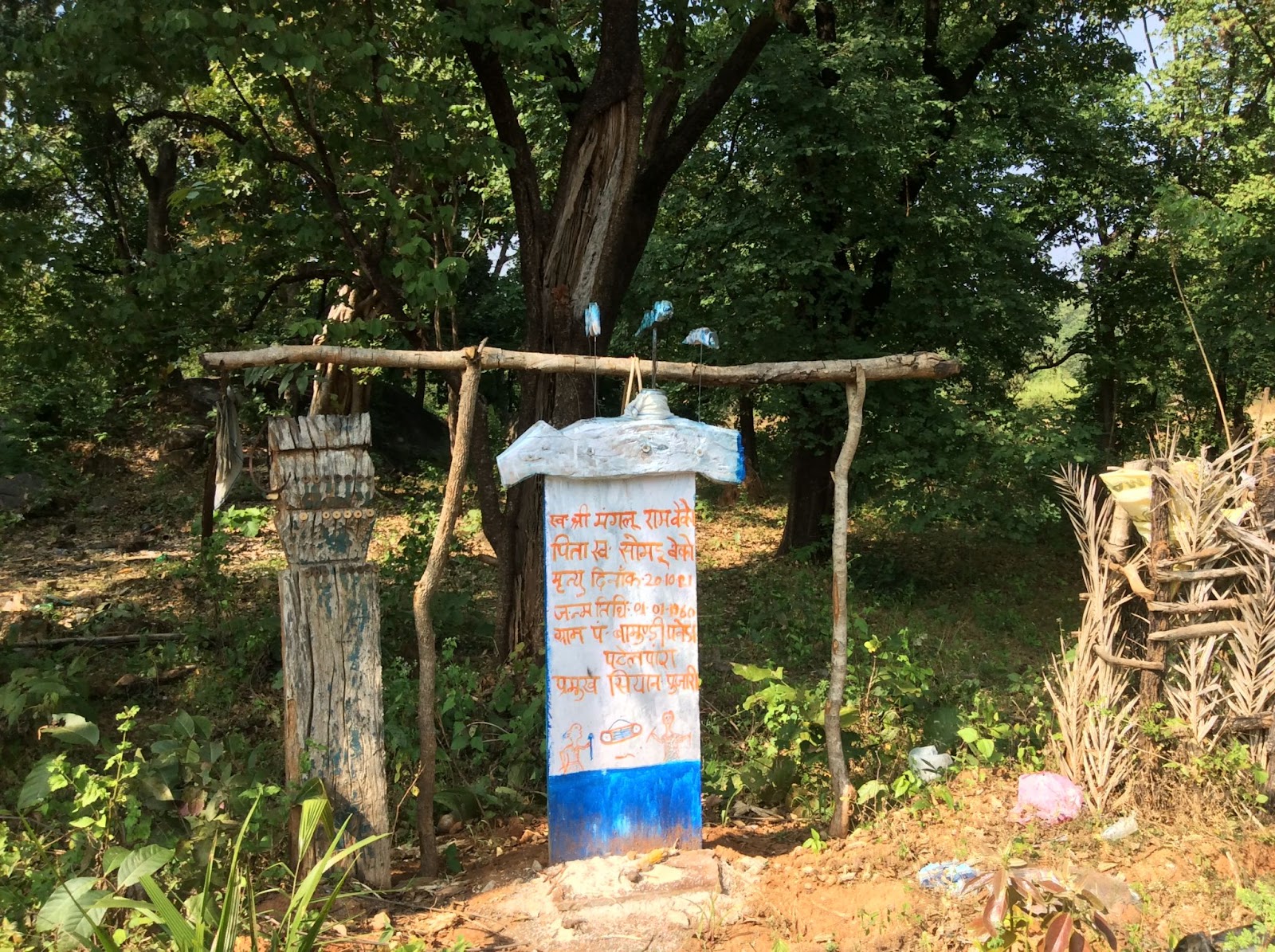
A pillar bears the name of the deceased, along with the date of birth. Some pillars made of stone have wooden structures attached on the top. According to Sori, who is also a tribal, pillars also belong to pujaris or priests in villages who worship the soil.
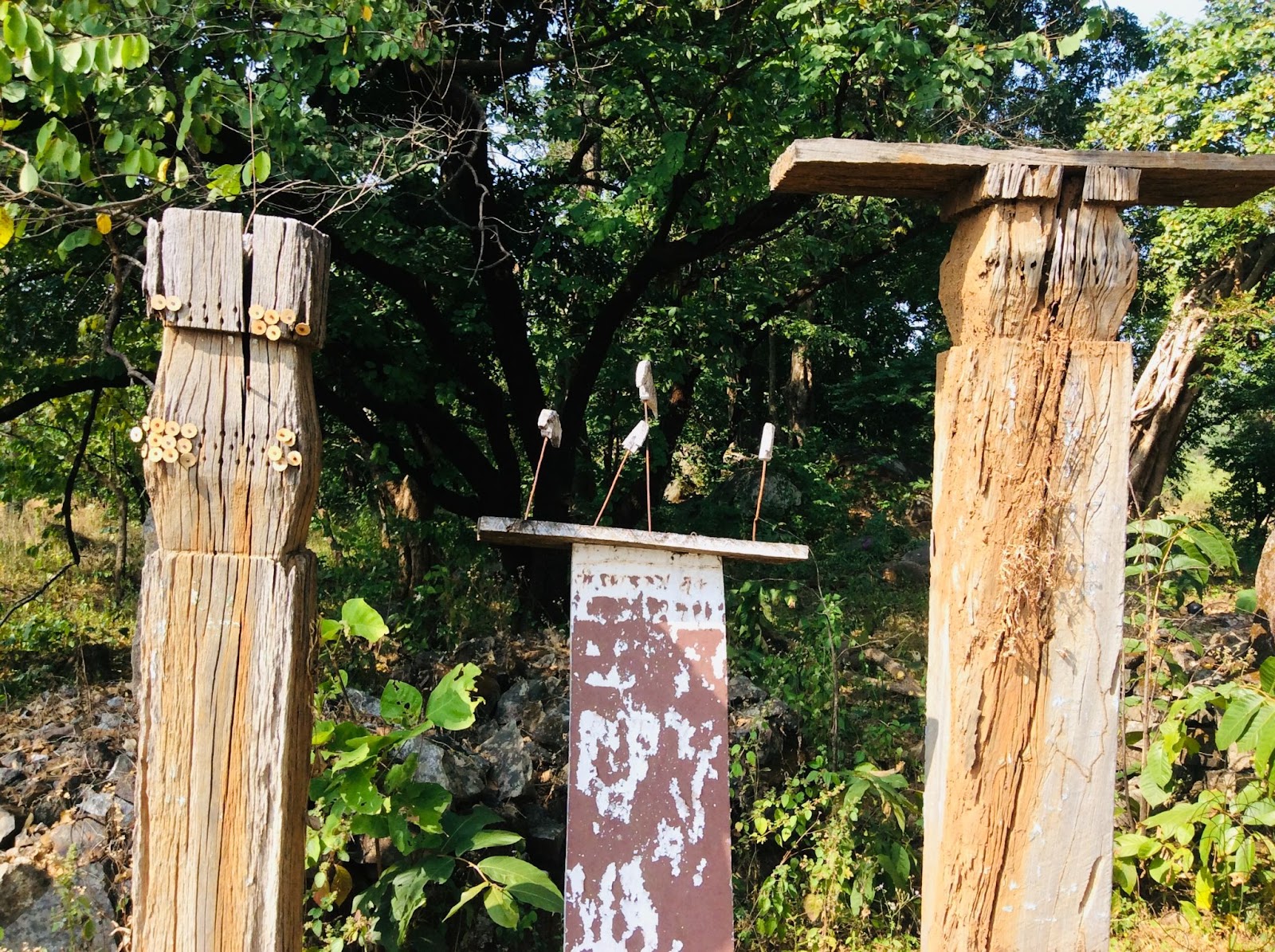
A shorter stone pillar is flanked by two longer wooden ones on either side.
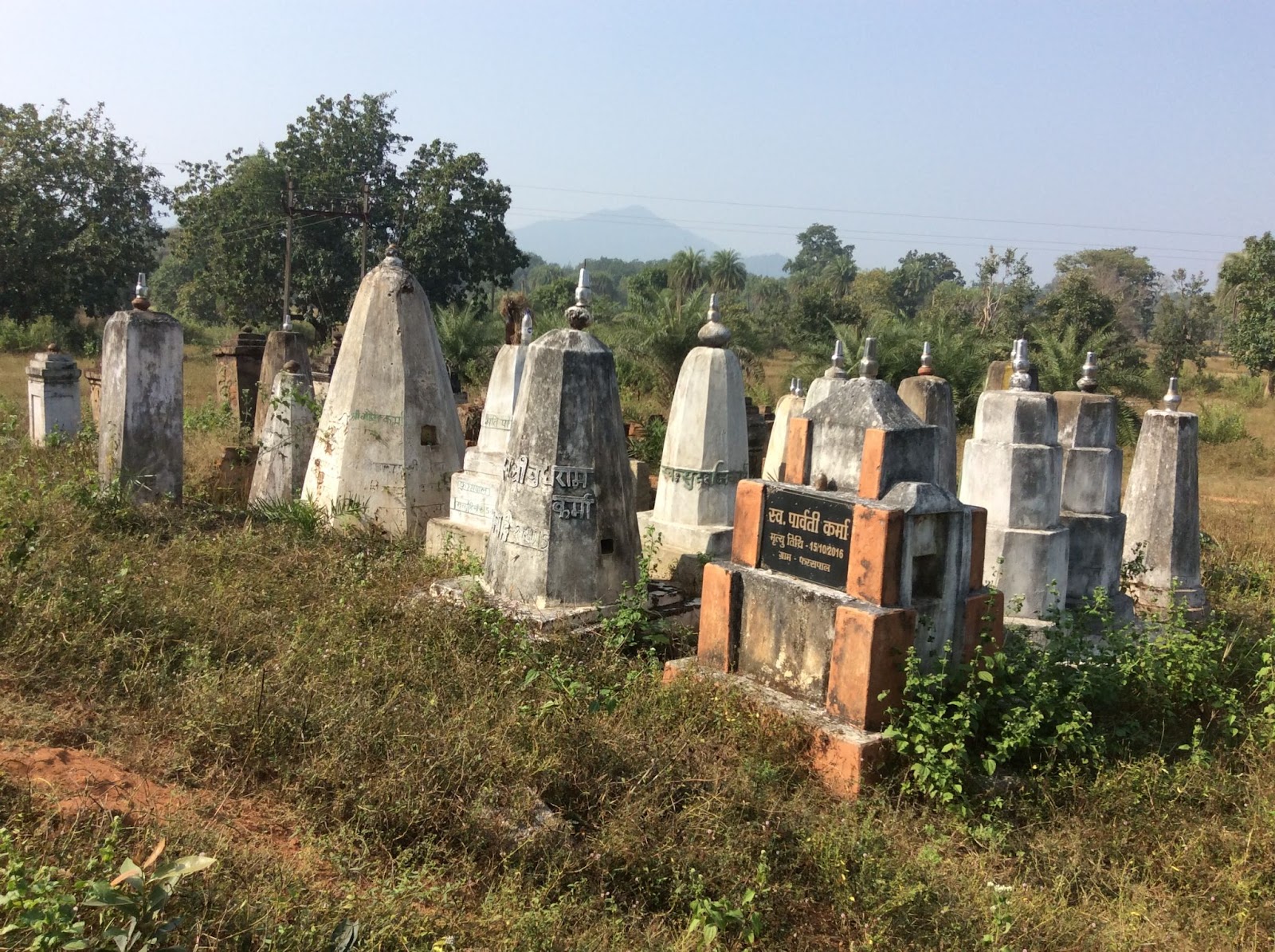
Notice the peculiar shape of these memory pillars which are mostly dome shaped.
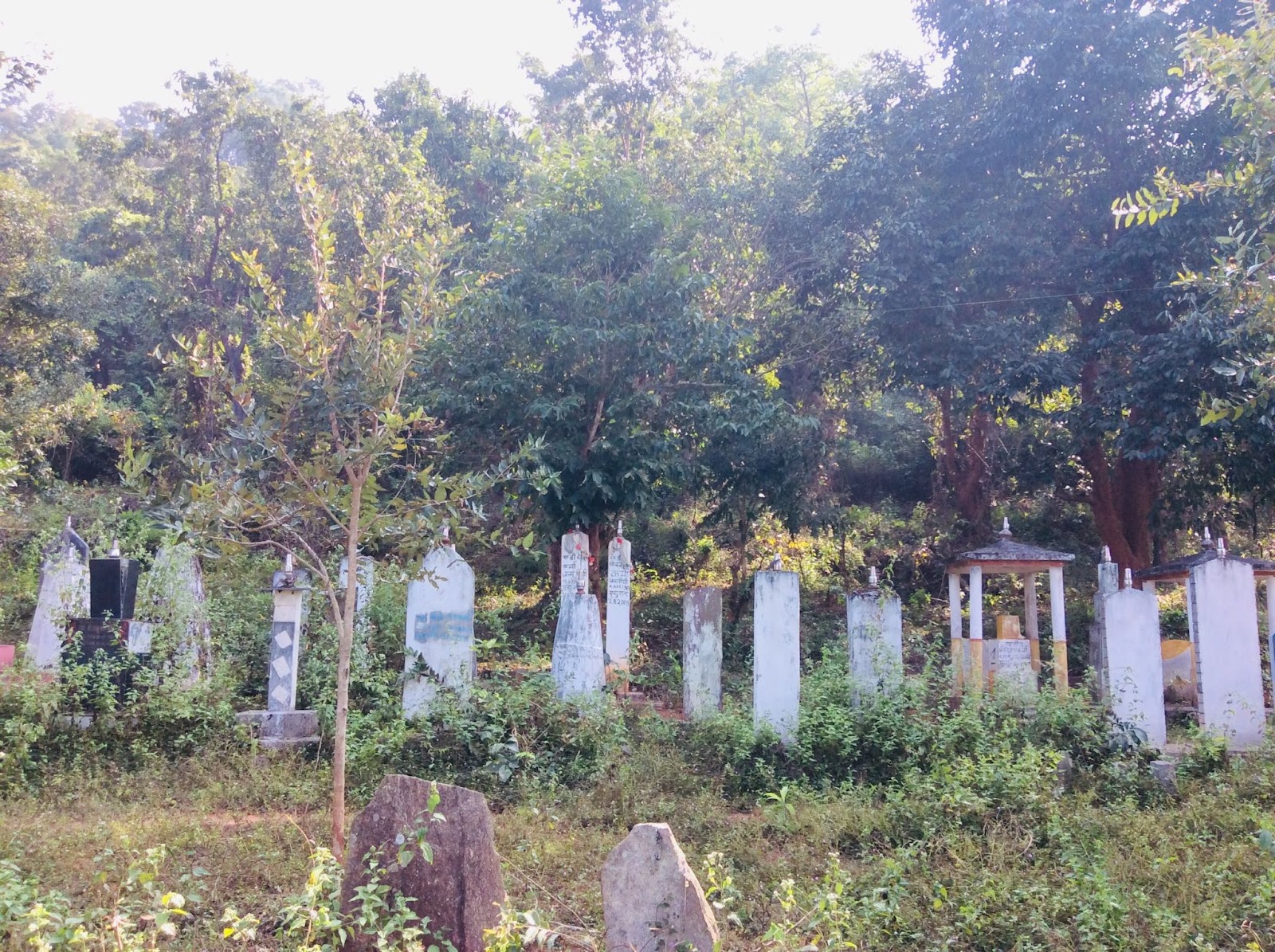
From the stark megalithic-type ones to the more ornate pillars surrounded by four vertical columns, this place surrounded by dense vegetation seems to bear a rich cultural history.
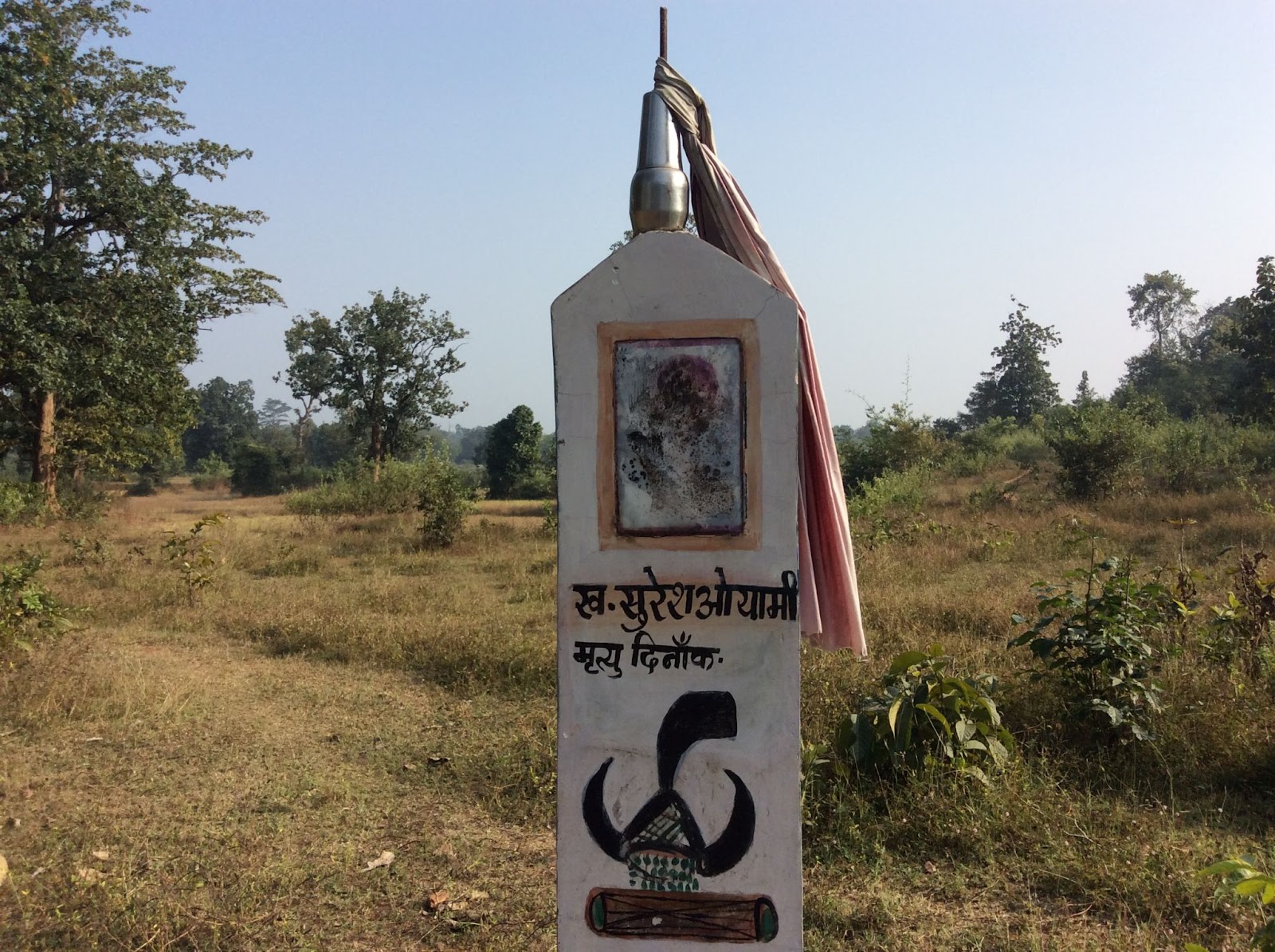
A memory pillar, with a photo of the deceased, which has become defaced. The person must have been fond of the bison horn dance as the headgear worn by Maria tribal male dancers suggest.
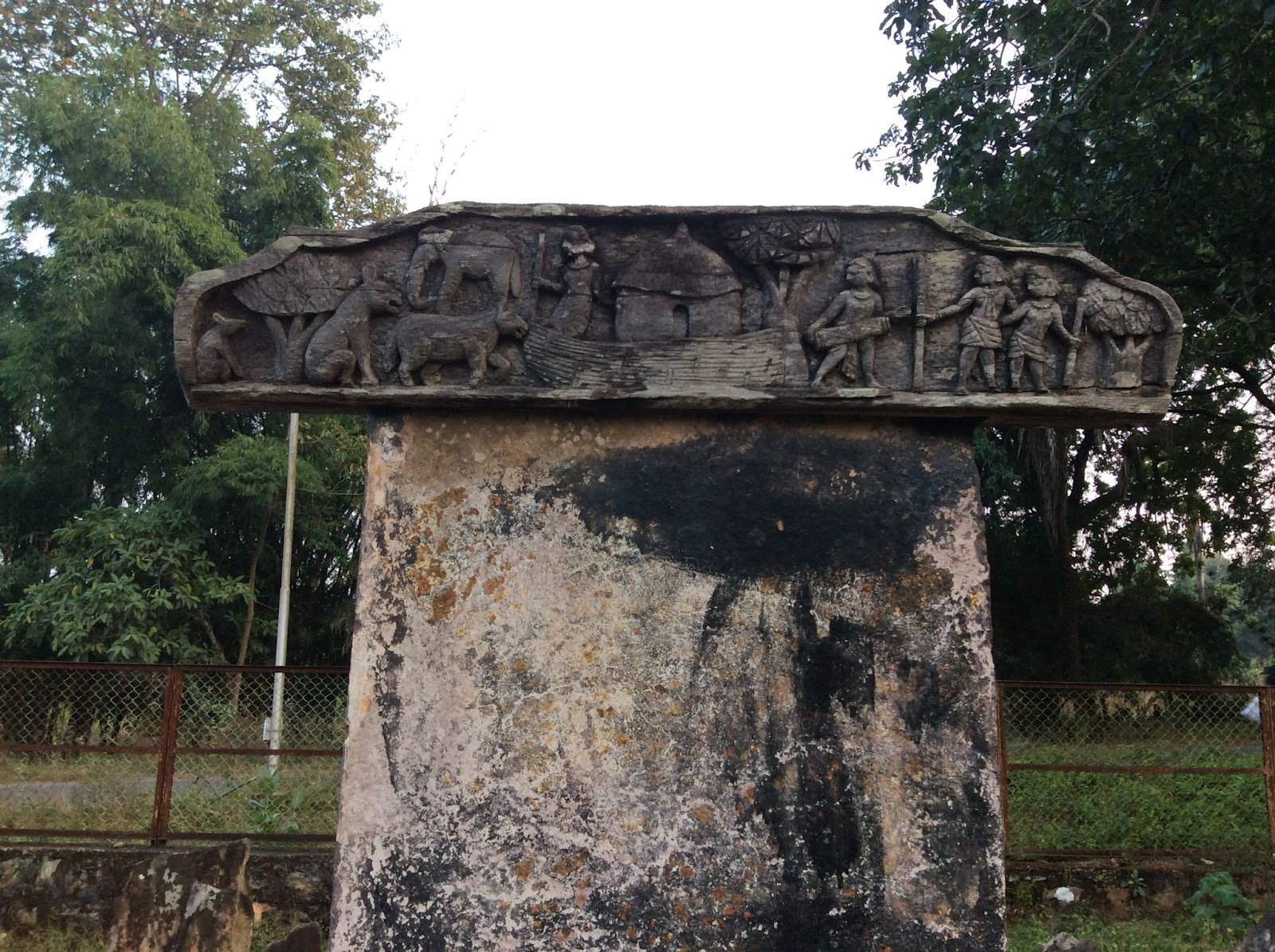
A close up of a memory pillar at Gamawada in Dantewada district. Gamawada, an Archaeological Survey of India protected site, has several memory pillars of varying heights. Notice the beautiful motifs of women and animals carved on wood.
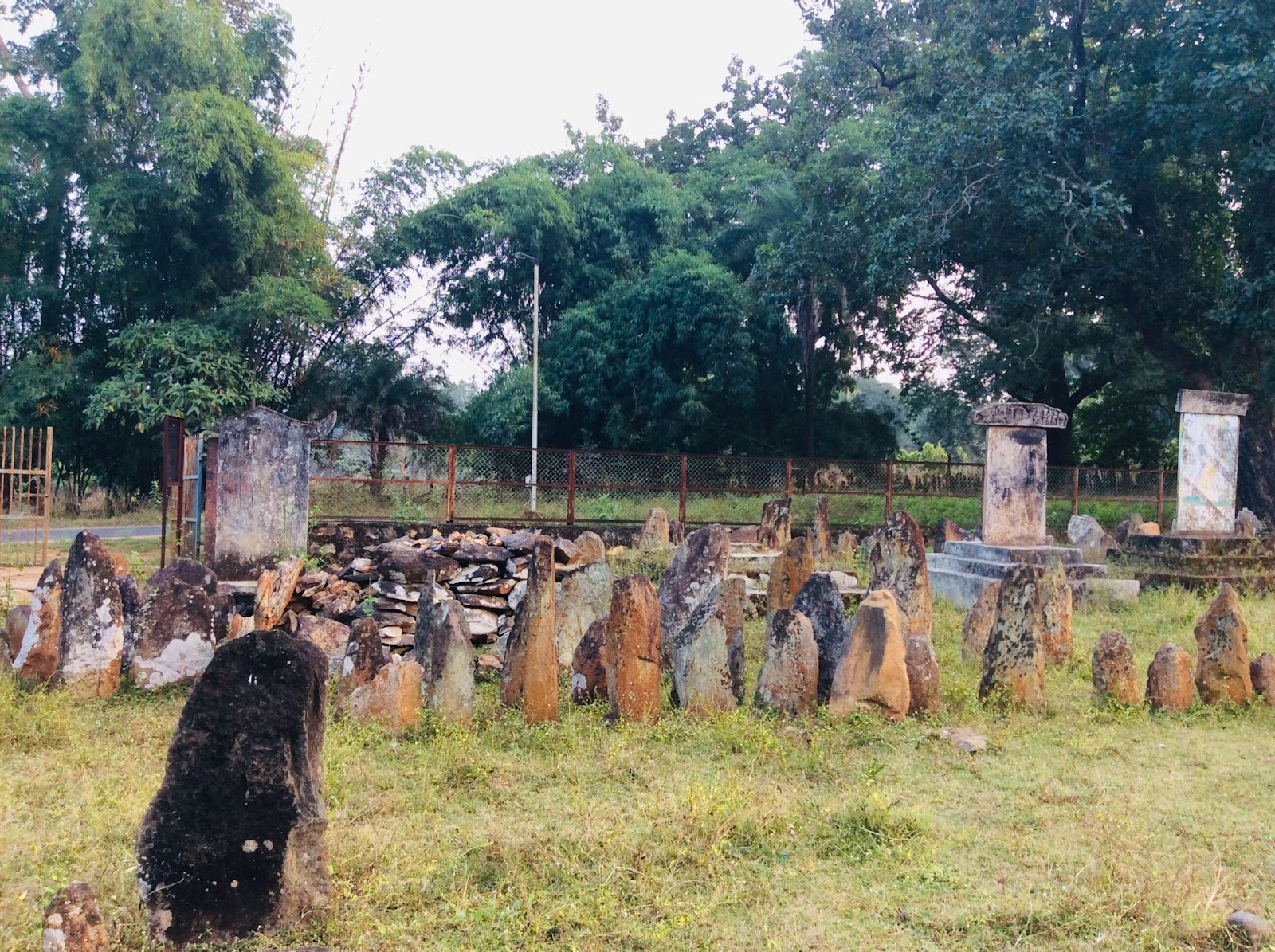
The memory pillars of Gamawada look beautiful in the late afternoon sun.
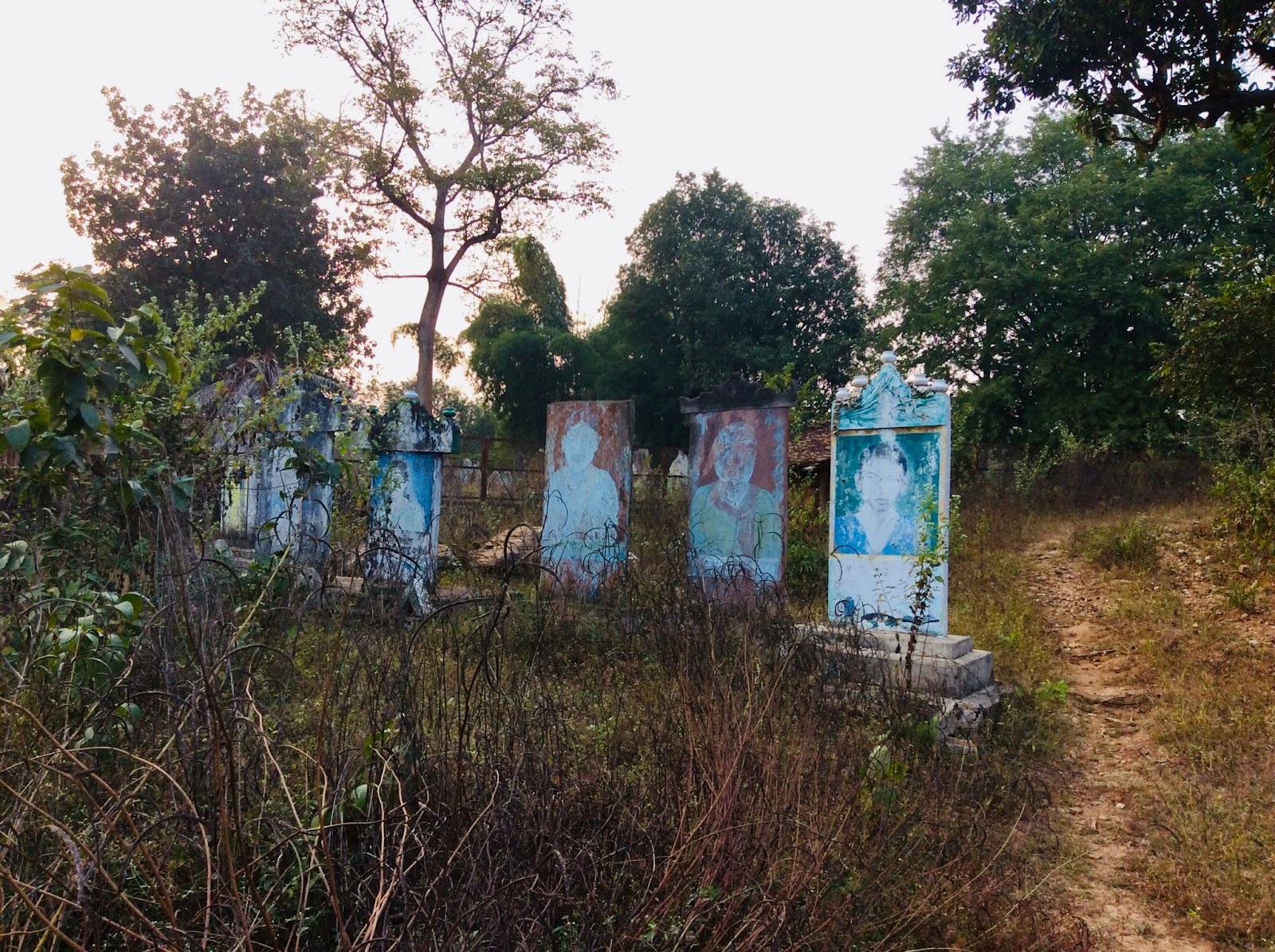
As evening was about to close in, these memory pillars, all having photos of the deceased persons, were spotted half hidden by shrubs near Gamawada.
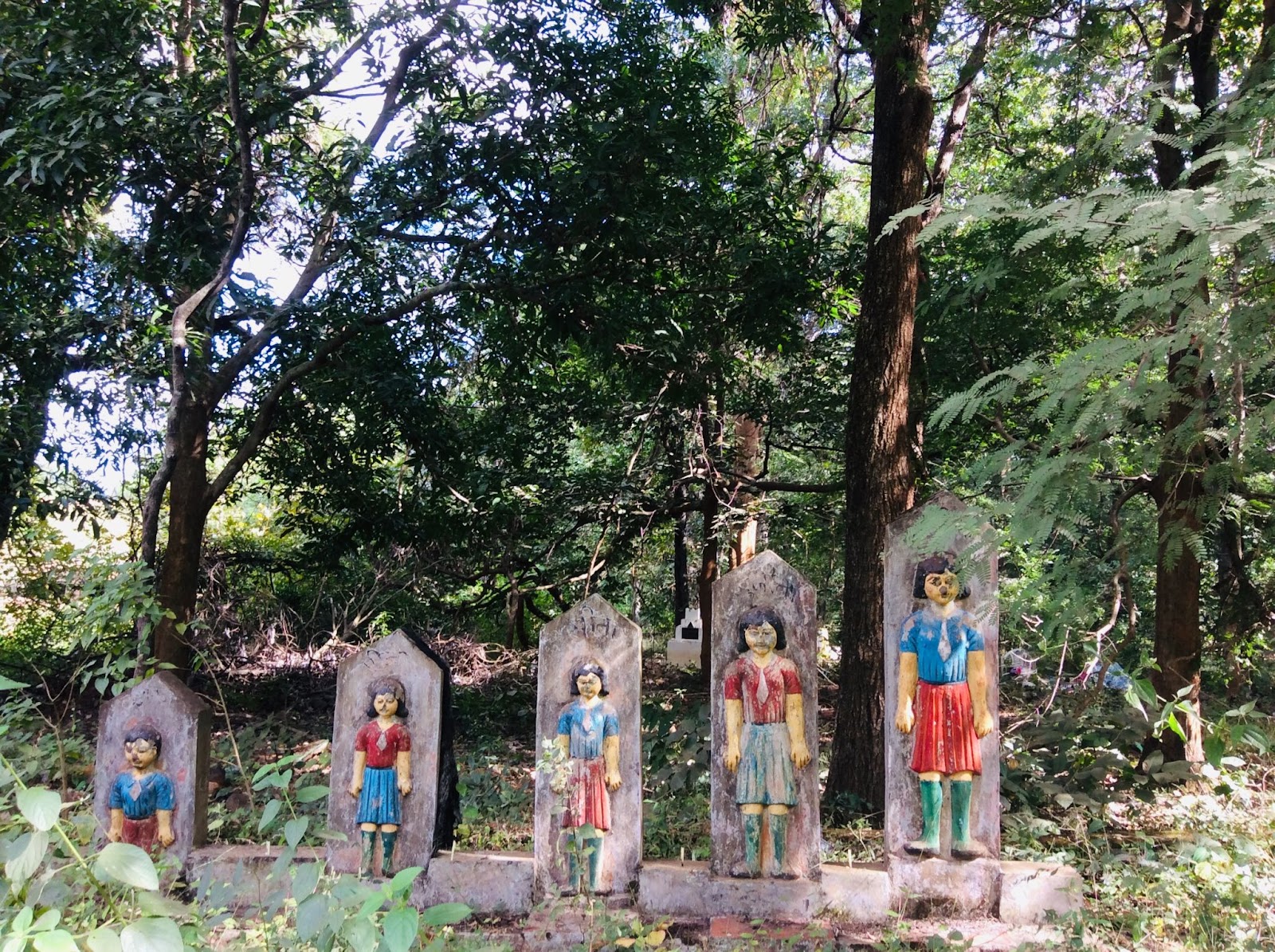
The five memory pillars in Kirandul are unique, to say the least. Notice the decreasing height of the pillars. Are these dedicated to four sisters and a brother? It is certainly so. Besides the story of the tragic incident of drowning, another version says the children were killed and their bodies thrown into a water body.
Deepanwita Gita Niyogi is a New Delhi based independent journalist



